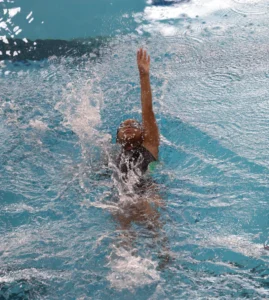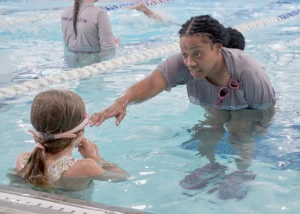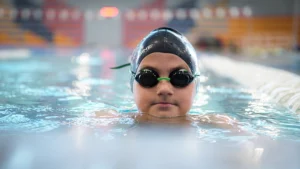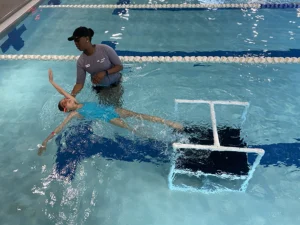Drowning Prevention Begins With Knowing How to Swim
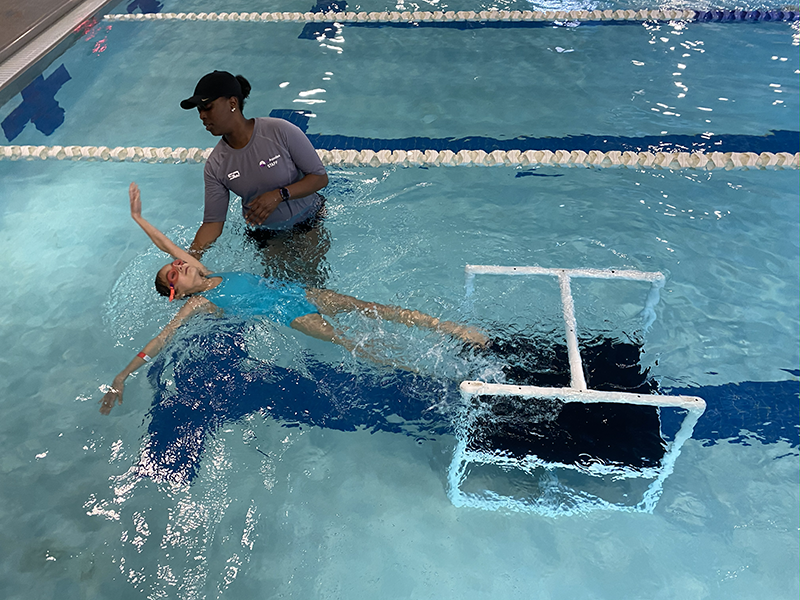
Drowning is the leading cause of accidental death in children. Even when everyone knows how to swim, accidents can still occur. So what should you do if you witness someone who appears to be drowning?
Watching someone struggle in the water triggers a natural instinct to jump in and help. But what if that impulse could cost two lives instead of one? When you know how to save someone from drowning— and know exactly what not to do— it’s the difference between a successful rescue and a heartbreaking tragedy.
Drowning prevention always starts with knowing how to swim and following swim safety guidelines, but it doesn’t end there. When emergencies occur, prompt responses can save lives.
Recognizing Drowning: It Doesn’t Look Like the Movies
Forget everything you’ve seen in movies, or imagine what drowning looks like. Real drowning isn’t always the splashing, yelling, and commotion you’d see on the screen— it can happen silently, under a minute.
What drowning actually looks like:
- Unable to call for help or wave
- Head low in water, mouth at water level
- Body vertical, not horizontal
- Eyes glassy or closed
- Trying to swim but making no progress
- Hair covering the face
- Gasping or hyperventilating
A drowning person’s arms move instinctively, pressing down, trying to keep their mouth above water. They cannot voluntarily wave or reach for help. By the time most people recognize the signs, precious seconds have passed.
How to Save Someone From Drowning: The Number One Rule
Lifeguards learn a critical phrase: “Reach, throw, row, go with support.” It’s drilled into training because jumping in the water should be your absolute last choice.
Safe rescue steps in order:
- Reach: Grab whatever’s handy – a pole, tree branch, pool noodle, even a broom. Stay on land, extend it toward them, and pull them in. Keep your body low and lean back to avoid being pulled in yourself.
- Throw: Got a life jacket nearby? A cooler? A ball? Even an empty milk jug floats. Throw it to them so they have something to grab while you’re calling for help.
- Row: If there’s a boat, kayak, or paddleboard around, use it. Just don’t let them climb in – that’s how boats flip. Have them hold onto the side while you paddle or row them back.
- Go: This is your last option. Only get in the water if you’re a strong swimmer and you have a flotation device with you. Period.
This order exists for a reason— each step keeps you safer than the one after it. The best rescue is one where the rescuer doesn’t end up needing rescue, too.
What NOT to Do During a Water Emergency
Understanding dangerous mistakes can prevent turning one victim into two.
Never do these things:
- Jump in without a flotation device
- Approach from the front
- Let the person touch you
- Attempt a rescue if you’re not a strong swimmer
- Turn away from the shore while rescuing
- Use the Heimlich maneuver on drowning victims
- Assume someone else will call 911
Many drowning deaths involve would-be rescuers who become victims themselves. Even strong swimmers have drowned trying to save others without proper technique or equipment.
If You Must Enter the Water
Sometimes, circumstances leave no choice. If you must go in, these techniques can keep you safe.
Critical rescue techniques:
- Bring a flotation device always
- Approach from behind, never the front
- If they grab you, dive underwater – they’ll let go
- Stay just out of reach
- Keep the shore in their line of sight
A panicking drowning victim will climb on anything to get air, including you. Their survival instinct overrides all reason. They will push your head underwater to get leverage. They cannot control this response.
Why the Rear Approach Saves Lives
If you listen to stories of rescuers, they will almost all share the same scenario: they nearly died too because the victims grabbed them. Approaching from behind prevents this.
Proper rear approach:
- Swim underwater if needed to get behind them
- Come up and place your arm under their armpit
- Hook across their chest
- Turn them so they face the shore
- Use sidestroke to swim them in, keeping their head above water
Lifeguards train extensively to break holds if grabbed. They practice being “drowned” by partners to learn techniques for escaping. Without this training, you’re at serious risk.
After the Rescue: Immediate Care
Getting someone out of the water is just the beginning. Drowning victims may have water in their lungs and will need to seek immediate medical attention.
Post-rescue steps:
- Call 911 immediately if not already done
- Check ABCs: Airway, Breathing, Circulation
- Look in their mouth for obstructions
- Listen and watch for breathing
- Check for a pulse at the wrist or neck
- Begin chest compressions if no pulse or breathing
- Use rescue breaths – drowning victims need oxygen
Don’t use abdominal thrusts (Heimlich). This can cause vomiting and choking. Focus on CPR, including rescue breathing.
How to Prevent Drowning (Your Best Defense!)
The best way to help prevent drowning from happening in the first place? Gaining water survival skills and strong swimming abilities.
Prevention through education:
- Formal swim lessons significantly reduce drowning risk
- ISR survival swimming teaches self-rescue to infants and toddlers
- Children who swim stand a better chance at saving themselves
- Adult swim lessons build skills and confidence
- Regular practice maintains proficiency
Research consistently shows that swimming ability is one of the biggest factors in preventing drowning. A child who knows how to float, breathe, and get to safety has protection that no amount of supervision or equipment can fully replace.
When you see someone in trouble in the water, every second counts. But those seconds are better spent finding a life guard and calling 911 than jumping in unprepared.
The drowning person needs help, not another victim. Your best contribution might be calling emergency services, throwing a flotation, or directing trained responders to the scene— not attempting an untrained rescue.
Give Your Family Real Protection
While the information here can help you respond in an emergency, the real protection comes from prevention through swimming education.
Every child and adult deserves to know how to save themselves in water. Whether your family needs Infant Swimming Resource(™) classes for babies and toddlers, 1-on-1 Learn-to-Swim classes for older children, or parents needing to strengthen their skills and sharpen their water confidence— every family member should have the tools to protect themselves.
Don’t wait for an emergency to become your wake-up call— Enlist WeAquatics as your partner in swim safety and enroll today!

